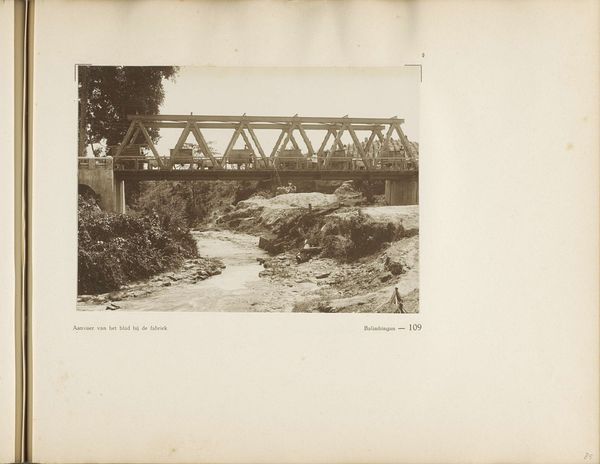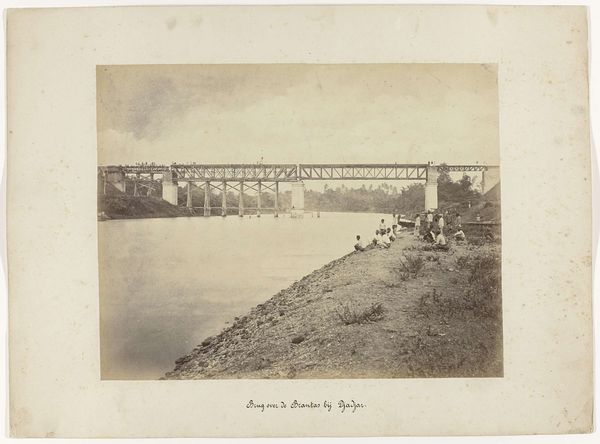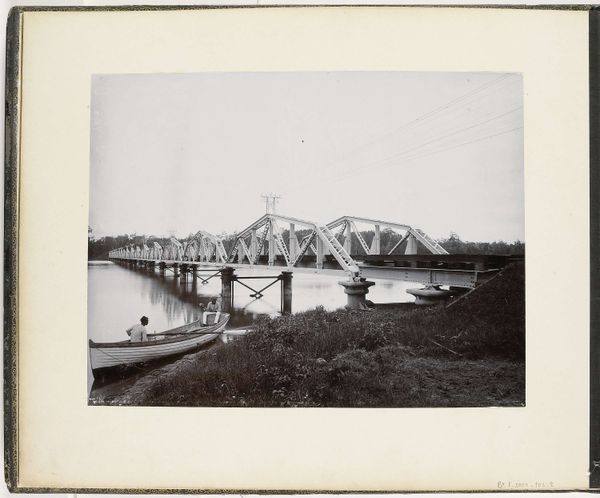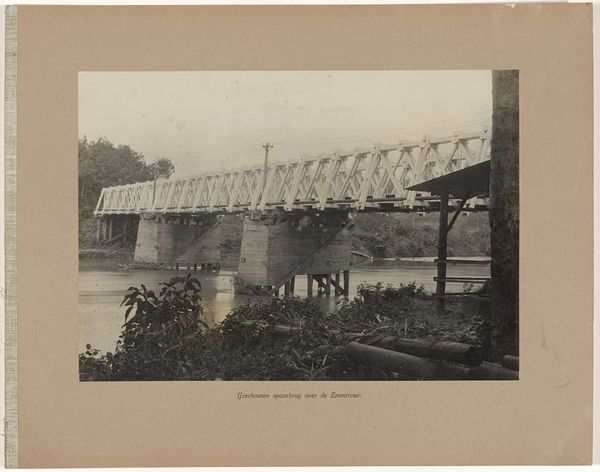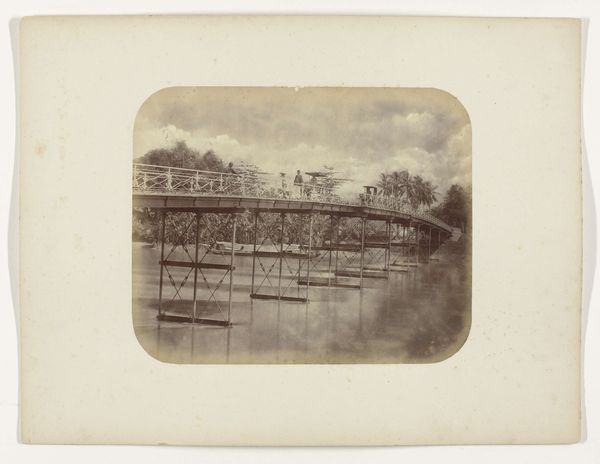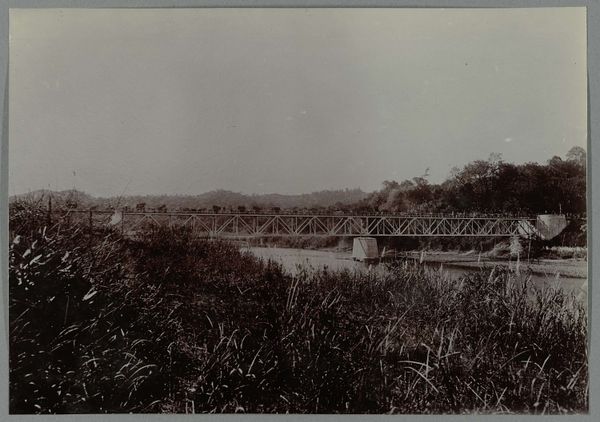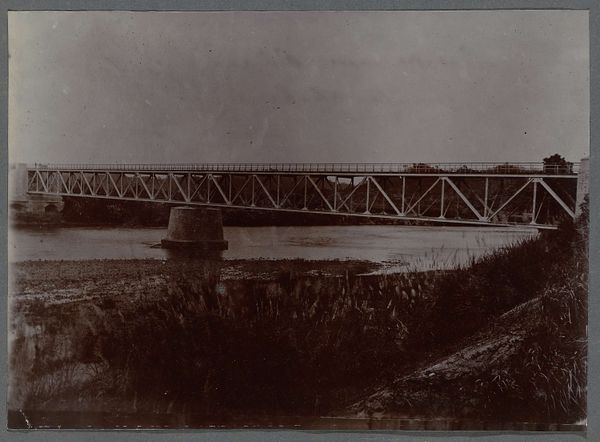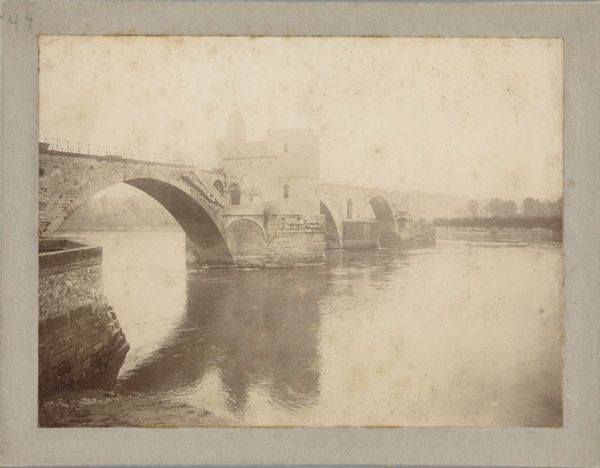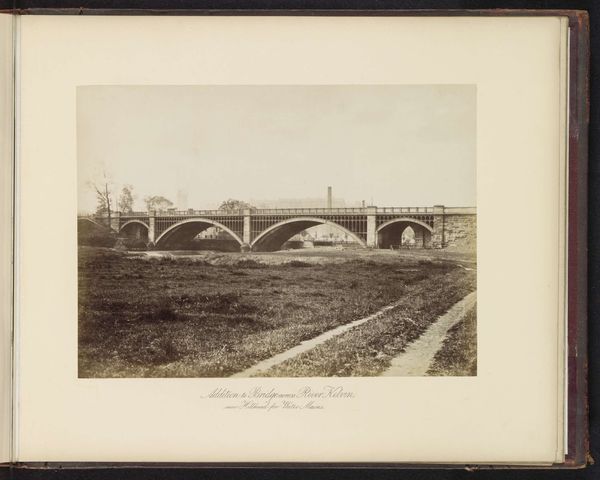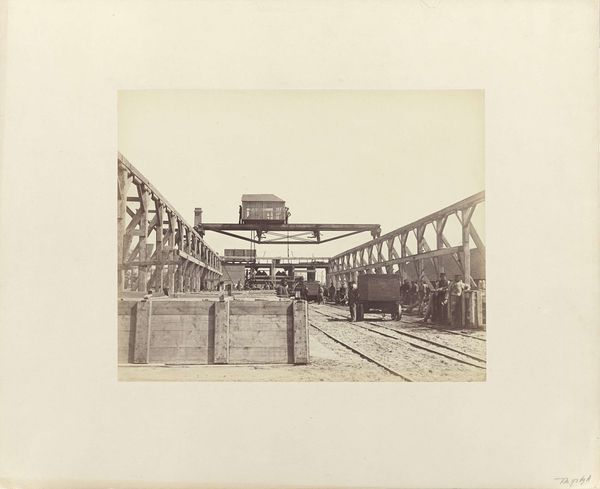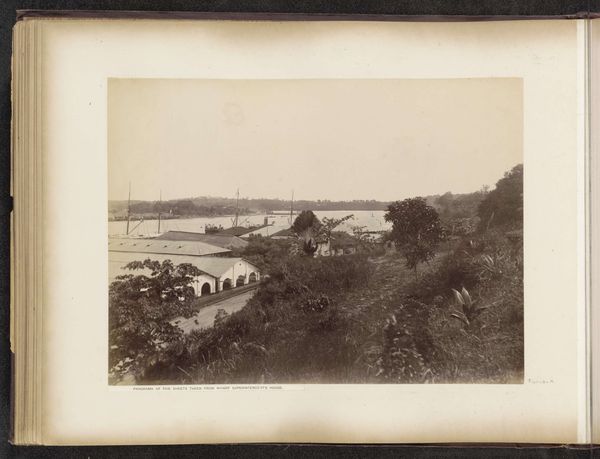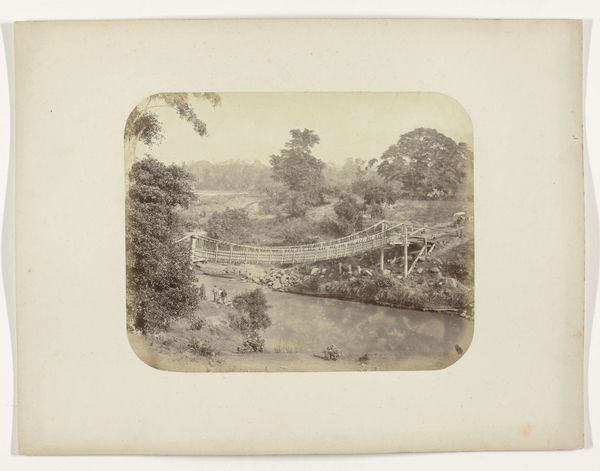
Aanleg van een spoorbrug op het traject Djoeja-Magelang in Nederlands-Indië Possibly 1898
0:00
0:00
kassiancephas
Rijksmuseum
photography
#
landscape
#
photography
#
constructionism
Dimensions: height 230 mm, width 296 mm
Copyright: Rijks Museum: Open Domain
Curator: Looking at this photograph, I am struck by its documentary feel. It's likely from 1898, titled "Aanleg van een spoorbrug op het traject Djoeja-Magelang in Nederlands-Indië," and it captures the construction of a railway bridge in what was then the Dutch East Indies, taken by Kassian Céphas. Editor: Immediately, I see a representation of colonial progress, this photograph projects a certain visual dominance and technological advancement juxtaposed against what seems like a very still landscape. It’s almost as if the bridge is forcefully disrupting the scene's natural rhythms. Curator: The bridge becomes a powerful symbol then, one that signifies connection, but also perhaps imposition. Look how the partially built bridge reflects the nature of progress and also symbolizes the changes it inevitably brings with it. Editor: Absolutely. And Céphas’ choice to position the river in the foreground acts almost like a barrier bisected and then overcome, mirroring the broader dynamics of colonialism. It highlights both the engineering feat and the inherent power imbalance. Also note the contrast of the crowd near the far structure, and how sparse the people are closer. Curator: A valid point, as it adds another layer to consider regarding labor and perspective. It's also interesting to consider the very medium: photography. A relatively new technology at the time, employed here to document and essentially legitimize colonial endeavors, imbuing the colonial project with this idea of progress through image making. Editor: I wonder about the intended audience of the photo? It’s likely it was aimed at projecting stability and advancement back to Europe. We must then consider the impact it had on those being photographed. What narratives were ignored or overwritten in this depiction of engineered infrastructure? Curator: Certainly. And even the architectural design, stripped to its skeletal steel shows how even utilitarian forms become potent icons, shaping our understanding of history, progress, and cultural exchange. Editor: Well, Kassian Céphas's photograph here reminds us that any photograph is a complex convergence, holding within it technology, societal progress, colonial history and also questions of cultural perspective. We can question how it portrays historical events, asking whose narrative is told and at whose expense.
Comments
No comments
Be the first to comment and join the conversation on the ultimate creative platform.
